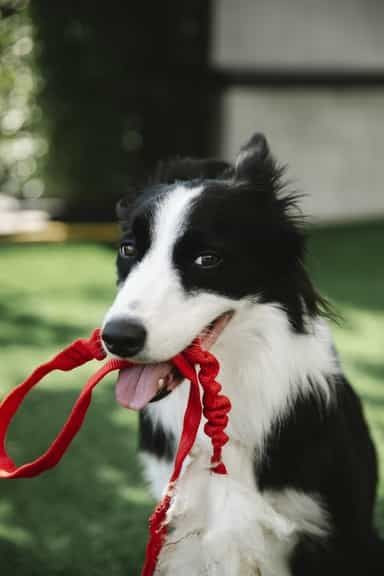Intermediate training
This next phase of training follows on from the basic training and involves real world and social etiquette your dog needs.
Sit-Stay
Handling Outdoor Distractions Find a park or another area with frequent foot traffic, where your dog can observe various distractions like people talking while walking or other dogs passing by. Conduct multiple trials of the "sit" command while distractions are present. If someone requests to pat your dog, allow them, but instruct your dog to "sit" beforehand.
Training in Public Spaces
Lesson 13 Insights When transitioning behaviors from home to new environments. Utilize establishing and abolishing operations. Consider skipping a meal or two and bring along enticing treats for reinforcement. Take advantage of the opportunity for improvement. Allow novel sights, sounds, smells, and encounters with other dogs to become familiar before expecting desired behaviors. If initial attempts, such as practicing wait before exiting the car, yield unsatisfactory results, persevere with additional repetitions. With consistent practice, your dog will gradually excel in various settings.
Recall Practice
Outdoor Scenarios, especially Dog parks provide an ideal setting for real-world recall practice. Upon entering the park, permit your dog to socialize and expend energy, leveraging the abolishing operation, before initiating recall exercises. Once your dog has acclimated to the surroundings, initiate a recall from a moderate distance. Reward generously for prompt responses. If successful, gradually increase the distance for more challenging recalls.
Wait before Exiting the Car
Calming Techniques Upon returning to your vehicle after the dog park visit, engage in "cooling-off" wait exercises with reduced urgency to exit. Your dog's familiarity with the location should aid in this phase. Load your dog into the car and initiate another wait trial. Given the relaxed state post-activity, your dog should exhibit improved patience. Refrain from allowing the dog to exit the car until it demonstrates a commendable pause.
Understanding behavior is key to comprehending why your dog behaves in certain ways, whether they are actions you appreciate or ones you don't. Communication is the cornerstone of effective training and is achieved through understanding behavior. Operant conditioning, which focuses on consequences, is one of the most powerful ways to communicate with your dog. It involves modifying behavior through positive and negative reinforcement. In simple terms, it's about establishing a sequence of "Give me what I want" before "You get what you want," similar to Grandma's Rules of "Eat your broccoli" before "You get your ice-cream." A practical technique to initiate training is the SMART x 50 method, which involves rewarding your dog fifty times a day for relaxed behavior. Prepare fifty pieces of dog snacks and reward your dog every time they exhibit relaxed behaviors such as lying down, rolling onto a hip, or lowering their head—anything you appreciate your dog doing. Consistently applying this technique over time will foster a more relaxed demeanor in your dog at home.
Dog behavior problems can differ significantly from one dog to another, influenced by their background and previous training experiences. In some cases, dogs may require a process of "untraining," which can be more time-consuming but has shown remarkable results in the past. It's important to recognize that no dog with behavior problems is a lost cause. With the right approach and guidance, we can address and assist with all types of dog behavior problems effectively.

Woof Dog Trainers
We are available 24/7 via text, email or telephone
Location
info@woofdogtrainers.com
Call 7748048451
All Rights Reserved | Company Name | Powered by Snapps
